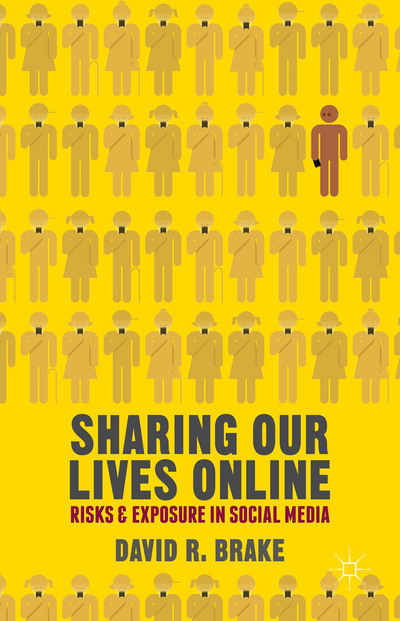The growth of social media sees us heading towards a radically open society. David R. Brake aims to provide an overview of the harms that can be posed by unwary social media use for both adults and children. He then draws on in-depth interviews, and a range of related theories of human behaviour to consider why this happens. This is an interesting resource for students and scholars in the fields of digital media and interpersonal communication, concludes Stefania Vicari.

Find this book:
While snippets of our lives become increasingly digital – and digitally shared – questions arise around the consequences this may have for our everyday realities. The main question concerns power; that is, to what extent can we retain full control of our personal information once it is online? The relevance of this topic is signalled by recent research conducted by the Pew Research Internet Project addressing one of the most serious consequences of sharing our lives on the internet: online harassment. The report shows that in their US national sample, 60% of respondents had witnessed some sort of online harassment, with young women being the most frequent victims and social network sites the most likely context.
In Sharing Our Lives Online, David Brake, Professor of Journalism at Humber College, Canada, provides an interesting overview of the reasons for and consequences of sharing personal information on social media. Each book chapter covers a different aspect of online sharing, from the risks of self-disclosure to the dynamics of interaction, and on to audience perceptions, social media memory, and factors – economic, technical and social – that ease self-disclosure.
The second chapter, “What is Risky and Who is At Risk”, deals with research on risks embedded in online self-disclosure. It first discusses the several challenges that researchers working on studies on online harassment and cyberbullying with children have to face. Contemporary research on online sexual harassment shows that “it is not social media use per se that leads to harmful situations but rather particular ways of behaving online and offline” (p. 22). However, studies on cyberbullying are affected by three main issues: variations in the ways the concept is measured, a failure to demonstrate that cyberbullying is more harmful than offline bullying, and a failure to demonstrate that there is a causal connection between online self-disclosure and cyberbullying. Brake also observes that the concept of the “digital native” does not seem to help the field, as the term suffers from definitional problems, the fact that young people are not inherently techie, and it is not clear how more active use of the Internet can be linked to more risks.
Research on adults’ risks from online self-disclosure has focused on a wider range of issues, from criminal exploitation to cyberstalking, on to employment harm, commercial exploitation, government surveillance and general interpersonal harms. This chapter is generally interesting but I believe its real strength emerges towards the end, when Brake highlights that while dramatic situations have been devoted much scholarly work, the more nuanced conditions, like interpersonal harms, have not received much academic attention.
The third chapter, “How and Why Social Media Interaction is Different”, is the most theoretically informed and draws attention to traditional theories of interpersonal interaction and mediated communication to address exactly those more common situations in which social media exposure leads to less dramatic harms. Not surprisingly, the chapter kicks off by referring to Goffman’s work on interpersonal interaction, and it does so by recalling two areas of research: Meroywitz’s work on behavioural changes in social relations as linked to mass media use, and Thompson’s discussion of mediated interaction. The chapter then unfolds by looking at Computer-Mediated-Communication (CMC) theories and introduces the concept of “interlinked telelogic communication”; that is, the idea that not only do social media platforms reach large audiences and allow them to respond (i.e., telelogic communication); they do so by easing the interlinking of users and messages. Brake then concludes the review of CMC literature by combining research on online anonymity, Boyd’s work on ‘hyperpublicity’, and Hogan’s theory of online performance and exhibition. This long theoretical discussion comes to an end with the construction of a conceptual framework to investigate risky social media exposure. Here, Brake advances that self-exposure behaviour on social media is influenced by macro and micro-level factors. The former – software codes, markets, laws and norms – constrain and shape social media use. The latter work at the level of interpersonal interaction, leading users to minimise their risk perception.
In chapter five, “Time and Memory in Social Media”, the reader is introduced to the concept of “social media memory” – the process through which social media data remains available for much longer than users usually think. Brake presents a general discussion on “secondary reception”, or how information on social media that is stored and retrieved becomes functional again and is re-accessed at a later time. The most thought-provoking part of this chapter comes with the discussion of empirical findings, especially because it covers different social media, from Snapshot to Twitter and on to Facebook, Tumblr, and blogs. This gives the reader a real taste of what the book is about and completes the theoretical discussion developed in the early chapters. In fact, the author shows how different social media platforms allow for different processes of secondary reception and concludes that further research should focus on the “temporal aspects of social media self-presentation” (p. 130).
Sharing Our Lives Online is an interesting resource for students and scholars in the fields of digital media and interpersonal communication but also for a non-academic audience interested in the risks of online self-exposure. Not only does it successfully combine theoretical discussion and empirical examination; it also draws upon specific case studies that make the reading particularly accessible.
Stefania Vicari is Lecturer in Media and Communication at the Department of Media and Communication of the University of Leicester. Her research focuses on the intersections between networks of contention, new media and the public sphere. She tweets at @stefaniavicari. Read more reviews by Stefania.







1 Comments